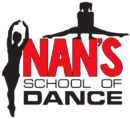Math in Movement
If you are a dancer or if you have a dancer in your home…then you have heard of an eight count! What if we were to tell you that there are even more math concepts (other than counting) that can be learned through dance? Would you be surprised to hear that there is a ton of math in dance? Well, our experts at Nan’s Dance are here to tell you that your child will find math in movement!
Geometry
A dancer uses their body to create various angles, lines and shapes to contribute to the effect of the dance. Lines, angles, and shapes are the very foundation of geometry. So when your child is learning a dance routine they are also using geometry.
- Angles: Dancers need to focus on the angles they form with their bodies to create the right shape during a dance. In ballet, dancers observe the angle of the body, legs, and arms in positions such as holding a leg in the air at a 90-degree angle.
- Lines: Dancers create lines with their body during their dance routine. Dancers also have to use lines during choreography. They may have to create two parallel lines or two perpendicular lines.
- Shapes: In all different types of dances, the dancer is making shapes with their body. A group of dancers working together can also create shapes such as triangles, rectangles, squares, circles, etc.
Time
In a choreographed dance routine, timing is everything! In dance, time is the relationship between one movement to the next.
- Duration: the length of time the movement lasts
- Phases: longer sequences of movement
- Pulse: accented beat or heartbeat of the rhythm
- Tempo: steady beat, fast or slow (the speed of the movement)
- Rhythm: a pattern of beats
Patterns
Patterns are an essential part of dance. The rhythms in music are patterns. Dancers time their movements to the beats in the music. Dancers also use patterns in their formations. The choreography in the dance can have patterns like AB and ABA.
Physics
Hearing the words physics and dance together might seem a little far-fetched, or crazy. But think about the energy, force, and speed that is used during dance.
- Energy and Force: the use of more or less energy while moving. Imagine two ballet dancers dancing together and about to do a lift. Both dancers need to be aware of how much energy and force they need to make that lift work.
- Speed: Dancers use speed in all of their dance routines. Dancers will need to calculate how fast or slow they need to move through the routine to get from one place to another on the stage.
Math is in Movement
As you can see, math is an integral part of dance and dance choreography. So if your dancer is struggling with a concept in their math class at school, see if you can relate it back to dance. Your dancer may have a better understanding of the concepts if they can relate to it. In addition, on behalf of all us artists who did not enjoy math in high school, and rolled our eyes at the teacher when they told us how important it is, we’re sorry, and you were right!
Want to Read More About Dance?
Take a look at some of our other articles about dance.
So why Nan’s school of dance?
We offer instruction in Ballet, Tap, Jazz, Contemporary, Hip Hop, Acro, and Pre-Dance, at all levels. We love having new members in our dance classes. We will help get your child acclimated to our dance school and make them feel right at home. When your child attends Nan’s School of Dance, they will become a part of our dance family and share in our love for dance!
Don’t forget to register!
From ballet to hip hop, we offer dance classes for ALL ages and skill levels in a variety of styles. We place students in classes that will challenge them while offering a fun atmosphere for learning and growth. We also offer Mommy & Me classes, (18 months – 2.5 years). Register online or give us a call at 919-803-6044 to hold your spot!
